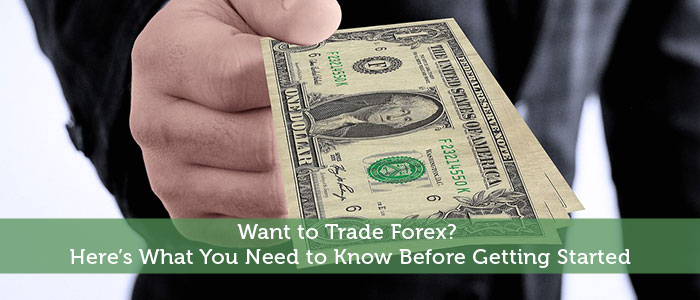The foreign exchange market, or Forex, is the largest financial market in the world with an estimated turnover of around $5 trillion per day. That’s right, the Forex market dwarfs the entire US GDP in a few days, and retail Forex trading – which is where you and I can trade – accounts for approximately 5% of the daily turnover. Forex trading involves the buying and selling of the world’s currencies with the objective to profit on exchange rate moves. While the US dollar is the most traded currency in the world and is involved in more than 80% of all transactions, other popular currencies include the euro, British pound, Japanese yen, Swiss franc, Canadian dollar, Australian dollar, and New Zealand dollar.
You’ve probably already been a part of the Forex market. Whenever you went to a foreign country for a holiday trip and exchanged your domestic currency for the foreign currency (think: US dollars for euros on your Paris trip), you participated in the global flows of foreign exchange. You’ve probably also noticed that exchange rates fluctuate from day to day, and this is where Forex traders come into play.
Recommended Forex Posts:
How do Traders Profit on Forex?
Forex traders try to anticipate the change in the exchange rate in order to buy a currency cheaply and sell it later at a higher price, using trading platforms such as MetaTrader 4 to technically analyze the market and manage their positions. That’s exactly the same as what a stock trader does, only that the underlying instruments are different (currencies vs. stocks). Just like stocks, currencies also fluctuate day over the day with the change of supply and demand for a certain currency pair.
However, as currencies usually fluctuate around 1% per day, Forex trading features a significant amount of leverage to increase your exposure to the market. The amount of leverage is one of the reasons why the Forex market attracts a growing number of traders from around the world. Still, you need to be cautious when trading on leverage, as it magnifies both your potential profits and losses. Always remember to place a stop-loss order on all your trades, which automatically closes a position once the price reaches the price level specified in the order.
A Powerful Trading Platform is a Trader’s Best Friend
Besides an active internet connection, all you need to start Forex trading is a brokerage account and a trading platform. While there are many trading platforms available, MetaTrader 4 remains the most popular platform for both beginners and experienced traders.
MetaTrader 4 offers a wide range of advanced charting tools and order types, as well as price quotes in real-time to make prudent trading decisions. The platform has a user-friendly interface grouped into four main windows – the Chart window, Market Watch, Navigator, and Terminal – and beginners can quickly get used to its main functionalities. If you intend to day-trade the markets, you’ll spend most of your time in front of your trading platform, so it’s of crucial importance to have a platform that suits all your needs, besides being fast and reliable.
Traders can analyze price charts in a variety of ways, add indicators with the click of a mouse, and quickly manage their open positions. In addition, you can also place pending orders with MetaTrader 4 which will execute automatically once the price reaches a certain level, so you don’t have to wait in front of your screen for hours for a trade setup to form. This is a useful tool for breakout traders – simply place a pending order below or above major support or resistance, and let the platform do the rest.






Forex is one of the hardest markets to trade. It’s moreso meant for day traders and short term swing traders than medium-long term traders.